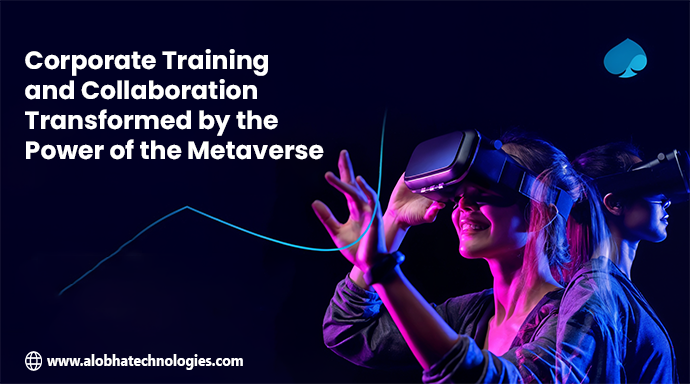
What Is the Metaverse?
The metaverse is a blend of physical and virtual reality, creating an immersive and interactive environment where people can work, socialize, or play using 3D avatars. It can be thought of as a digital world where businesses, employees, and consumers come together to collaborate, learn, and interact in ways that feel tangible and engaging. By utilizing virtual reality (VR), augmented reality (AR), and mixed reality (MR), the metaverse allows remote users to connect and experience environments as if they were physically present.
Transforming Corporate Training with the Metaverse
Corporate training has traditionally relied on methods such as workshops, in-person seminars, eLearning courses, and virtual meetings. However, these approaches often lack interactivity and engagement, leaving employees feeling disengaged and struggling to retain information. The metaverse presents a new opportunity by enabling immersive, hands-on, and interactive learning experiences.
1. Simulated Real-World Scenarios
Training employees in fields like medicine, engineering, and manufacturing often requires hands-on experience with costly or risky equipment. The metaverse allows companies to create realistic virtual simulations for safe practice. For example, medical professionals can perform surgeries in VR, and factory workers can operate machinery in a simulated environment. These virtual spaces replicate real-world challenges, providing practical skills without the associated risks.
2. Customized Learning Paths
Traditional corporate training often takes a one-size-fits-all approach. In the metaverse, organizations can create personalized learning experiences for each employee. AI-driven avatars and virtual mentors guide employees through training modules, adjusting difficulty and resources based on their progress. This ensures training aligns with individual learning styles and paces.
3. Immersive Learning Environments
In the metaverse, learning happens in immersive and interactive environments. This includes virtual classrooms where employees interact with trainers and peers and role-playing exercises to practice soft skills like negotiation and communication. The sensory engagement from virtual reality (VR) and augmented reality (AR) enhances learning retention, as studies show that people remember more when actively engaged in realistic settings.
4. Global Access to Training
Geographical barriers can hinder global corporate training programs, making it difficult and expensive to gather employees in one location. The metaverse solves this problem by enabling employees to access high-quality training from anywhere. Whether for onboarding new hires or advanced leadership sessions, employees can join these virtual experiences from their homes or offices.
Revolutionizing Remote Collaboration
As the global workforce shifts to remote work, companies struggle to maintain effective collaboration. Traditional video calls and messaging platforms often lack the human connection needed for creative teamwork. The metaverse addresses this by creating an environment that mimics real-world interactions for more engaging collaboration.
Virtual Workspaces
Employees in the metaverse can work in virtual offices or meeting rooms, interacting with colleagues through 3D avatars. These customizable spaces can replicate a company’s layout or promote creativity. Teams can brainstorm, collaborate on projects, or meet clients in an immersive environment that enhances engagement and communication.
Enhanced Collaboration Tools
The metaverse offers collaboration tools that traditional video meetings lack, such as virtual whiteboards and 3D modeling software. Teams can work together in real time, manipulating 3D product prototypes and providing instant feedback. This ability to visualize and interact in 3D enhances productivity and innovation in collaboration.
Stronger Team Engagement
Remote work can leave employees feeling disconnected, resulting in lower morale and productivity. The metaverse addresses this by enabling more human-like interactions and fostering a sense of community. Virtual team-building activities, such as games and social events, encourage camaraderie and help preserve strong interpersonal connections that might be lost in traditional remote settings.
Cross-Functional Collaboration
In the metaverse, teams from different departments and even different companies can collaborate seamlessly in a shared virtual space. This can be especially valuable for cross-functional projects where various skill sets and expertise are needed. Whether it’s marketing, product development, or IT, departments can work together without being restricted by time zones or location. Virtual events such as hackathons or innovation challenges could be organized across global teams, resulting in more effective, cross-disciplinary collaboration.
Overcoming Challenges and Building the Future
The metaverse presents considerable potential for transforming corporate training and facilitating remote collaboration; however, it is not without its challenges. Organizations are required to invest in the essential technological infrastructure and ensure that employees possess access to compatible devices, such as virtual reality headsets. Furthermore, it is imperative to provide training for staff to utilize metaverse tools effectively.
Addressing privacy and security concerns is also critical in order to safeguard sensitive company data and ensure safe interactions within virtual environments. Additionally, creating an immersive and accessible experience for all employees will necessitate ongoing development of metaverse platforms and software. As these technologies continue to advance and become increasingly accessible, organizations will be better equipped to harness the full capabilities of the metaverse.
Conclusion
The metaverse is on the brink of revolutionizing corporate training and remote collaboration, providing organizations with groundbreaking methods to engage and empower their workforce like never before. By offering a range of immersive learning experiences—including realistic simulations and interactive training modules—companies can create vibrant virtual environments that encourage creativity and innovation.
These dynamic virtual workspaces enable employees to collaborate seamlessly, irrespective of geographical barriers, fostering a sense of community and teamwork. As employees immerse themselves in these engaging settings, they can enhance their skills and productivity, while also driving higher levels of motivation and job satisfaction.
As the metaverse continues to evolve and expand its capabilities, it will emerge as a vital resource for businesses striving to adapt and thrive in a fast-paced, ever-changing world. The future of work is increasingly virtual, and the metaverse will be at the forefront of this transformation, shaping how organizations operate and how employees connect and learn.